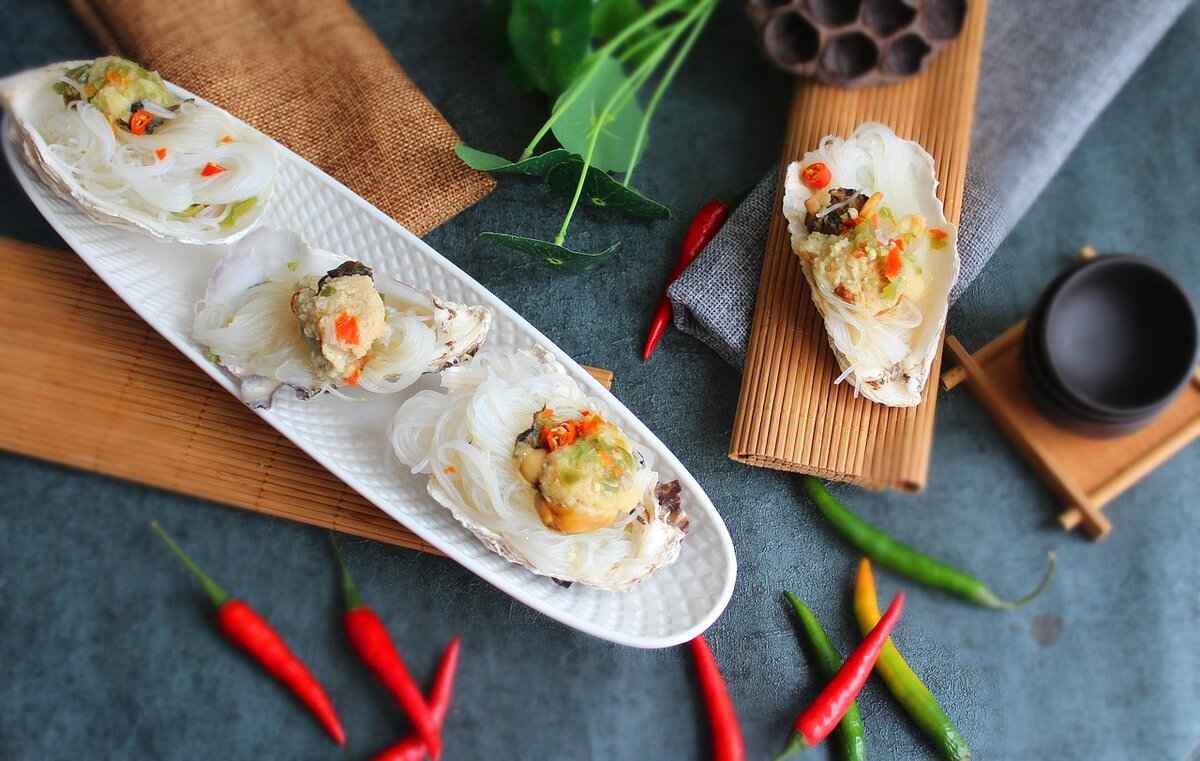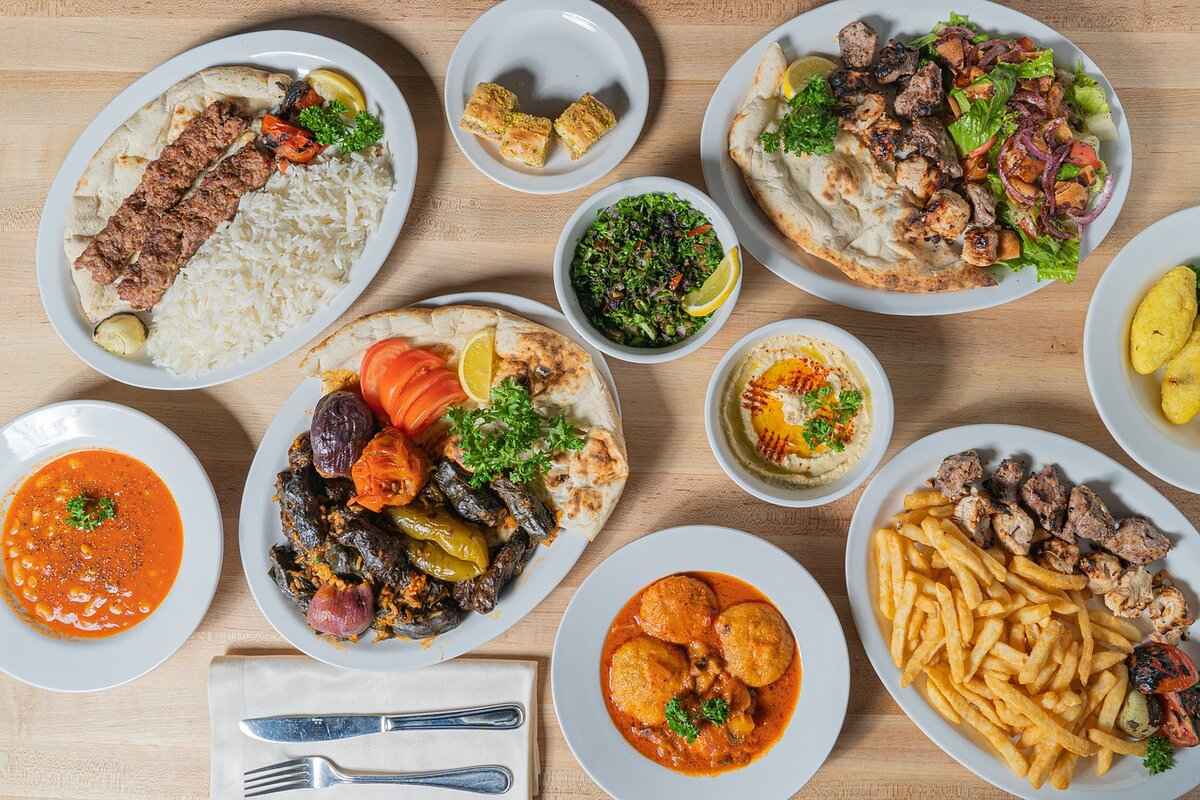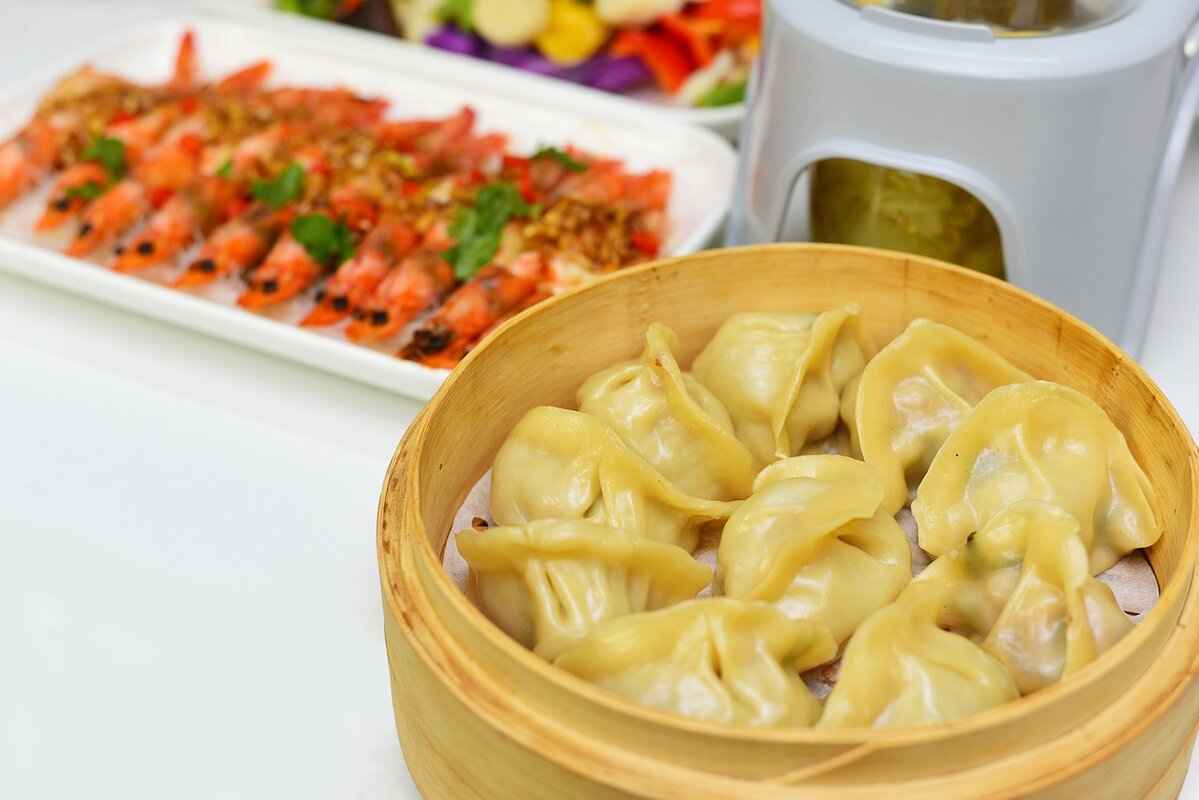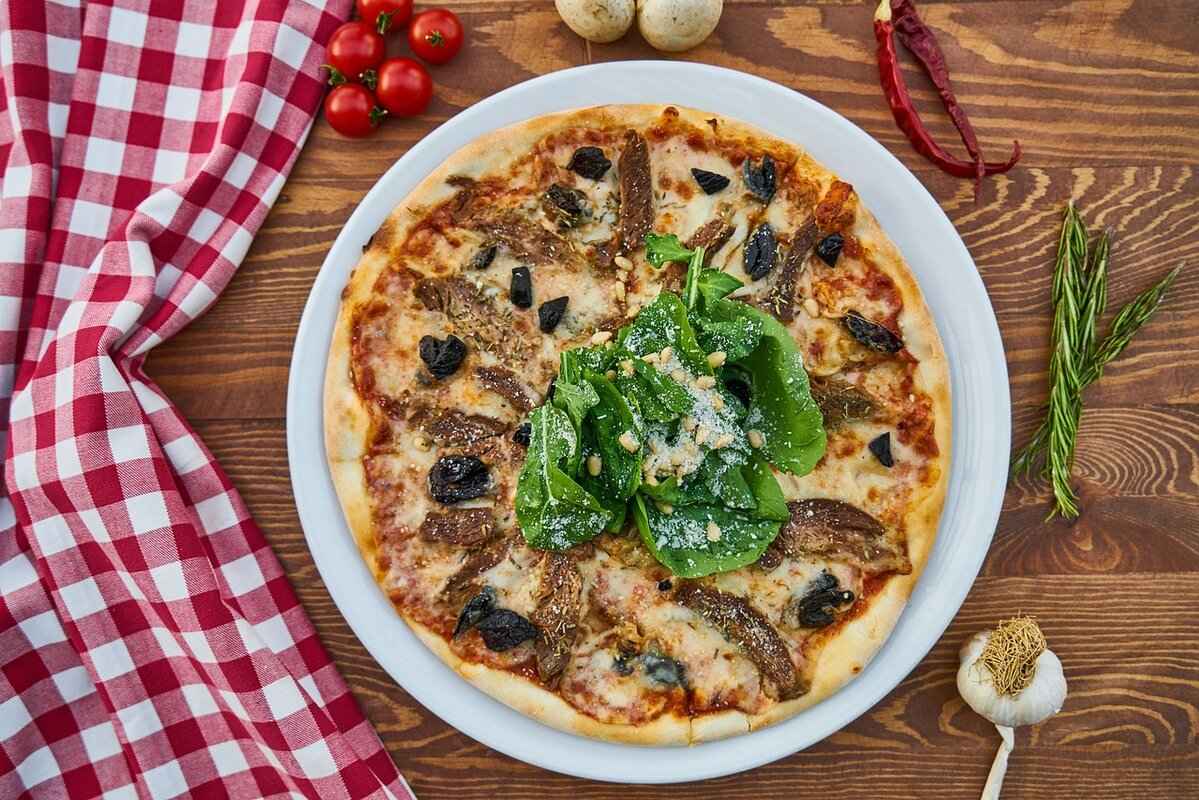Nyonya cuisine, often referred to as Peranakan cuisine, is a vibrant culinary tradition that beautifully merges the flavors and techniques of Chinese and Malay cooking. This unique cuisine is a testament to the rich cultural heritage of the Straits Chinese community in Southeast Asia, particularly in Malaysia and Singapore. In this article, we will delve into the origins of Nyonya cuisine, its key ingredients, signature dishes, and the cultural significance it holds.
Nyonya cuisine emerged from the intermingling of Chinese immigrants who settled in the Malay Archipelago and the local Malay population. This fusion created a distinctive culinary identity that reflects both cultures. The term “Nyonya” refers to the women of the Peranakan community, who played a crucial role in preserving and innovating culinary practices. The cuisine is characterized by its use of traditional Chinese cooking methods combined with local ingredients and spices.
The essence of Nyonya cuisine lies in its diverse ingredients, which include:
- Spices and Herbs: Essential to Nyonya dishes, spices such as lemongrass, galangal, and turmeric are commonly used to create aromatic and flavorful profiles.
- Chili and Sambal: Chili peppers are integral to Nyonya cuisine, often crafted into sambal, a spicy condiment that enhances the flavor of many dishes.
- Coconut Milk: This ingredient adds richness and creaminess to curries and desserts, embodying the fusion of flavors characteristic of Nyonya cooking.
- Fresh Ingredients: The use of fresh seafood, vegetables, and fruits is paramount, emphasizing locally sourced produce that adds authenticity and vibrancy.
Nyonya cuisine boasts a variety of signature dishes, each showcasing the unique blend of flavors and cooking techniques:
- Ayam Buah Keluak: A hallmark of Nyonya cuisine, this dish features chicken cooked with the unique buah keluak nut, resulting in a rich, earthy flavor that is both complex and satisfying.
- Laksa: A beloved noodle soup, laksa combines spicy coconut milk broth with rice noodles, seafood, and herbs, representing a harmonious balance of flavors.
- Char Kway Teow: Stir-fried flat rice noodles with shrimp, Chinese sausage, and bean sprouts, often enhanced with a touch of dark soy sauce.
- Rendang: A slow-cooked beef dish rich in spices and coconut milk, showcasing the depth of flavor that defines Nyonya cooking.
Nyonya cuisine serves as a cultural bridge, embodying the historical interactions between Chinese immigrants and the local Malay population. The Peranakan community has preserved its unique cultural identity through culinary practices, showcasing their history and traditions.
For those eager to explore Nyonya cuisine, various restaurants and food markets across Southeast Asia offer authentic dining experiences:
- Local Restaurants: Many eateries in Malaysia and Singapore specialize in Nyonya dishes, providing a genuine taste of this rich culinary tradition.
- Food Festivals: Events celebrating Nyonya cuisine often feature cooking demonstrations, tastings, and cultural performances, allowing visitors to immerse themselves in the flavors and traditions of the Peranakan community.
In summary, Nyonya cuisine is more than just food; it is a celebration of cultural identity and heritage, marked by its unique flavors and cooking techniques. Whether you are a food enthusiast or simply curious about this culinary tradition, exploring Nyonya cuisine offers a delicious journey through history and culture.

What is Nyonya Cuisine?
Nyonya cuisine, also known as Peranakan cuisine, is a distinctive culinary tradition that beautifully melds the flavors of Chinese and Malay cooking. Originating from the Straits Chinese community, this cuisine is not only a reflection of the region’s rich history but also a celebration of its diverse cultural influences. The intricate blend of ingredients, techniques, and flavors creates a unique gastronomic experience that is both satisfying and deeply rooted in heritage.
Nyonya cuisine stands out for its complex flavor profiles and vibrant presentation. The dishes are characterized by a harmonious balance of spices, herbs, and fresh ingredients, which are essential in creating the distinctive tastes that define this culinary art. The creative use of ingredients showcases the historical intermingling of cultures in Southeast Asia, making each dish a story of its own.
The essence of Nyonya cuisine lies in its remarkable ingredients, which include:
- Spices: Essential for flavor, spices such as lemongrass, galangal, and turmeric are frequently used, creating aromatic dishes that excite the palate.
- Chili: A staple in Nyonya cooking, chili is often transformed into sambal, a spicy condiment that enhances many meals, reflecting the cuisine’s Malay influences.
- Coconut Milk: This ingredient adds creaminess and richness to dishes, particularly in curries and desserts, embodying the fusion of flavors.
- Fresh Produce: The use of locally sourced seafood, vegetables, and fruits emphasizes freshness and authenticity, making every dish vibrant and appealing.
Nyonya cuisine boasts a variety of signature dishes that highlight its unique flavors and culinary techniques. Some of the most popular include:
- Ayam Buah Keluak: A standout dish featuring chicken cooked with the unique buah keluak nut, resulting in a rich, earthy flavor that is both complex and satisfying.
- Laksa: This beloved noodle soup combines a spicy coconut milk broth with rice noodles, seafood, and herbs, representing a harmonious balance of flavors that is quintessentially Nyonya.
- Rendang: A slow-cooked beef dish that is infused with a variety of spices and coconut milk, creating a tender and flavorful meal that exemplifies Nyonya cooking.
Nyonya cuisine serves as a cultural bridge, embodying the historical interactions between Chinese immigrants and the local Malay population. This blend of culinary practices reflects a rich tapestry of identity and heritage.
The Peranakan community, descendants of Chinese immigrants who settled in the Malay Archipelago, has preserved their unique cultural identity through their culinary practices, showcasing their history and traditions. Food plays a vital role in Peranakan festivals and celebrations, where traditional dishes are prepared and shared, reinforcing community bonds and cultural pride.
For those eager to explore Nyonya cuisine, various restaurants and food markets across Southeast Asia offer authentic dining experiences. Many local eateries, especially in Malaysia and Singapore, specialize in Nyonya dishes, providing a genuine taste of this rich culinary tradition.
Additionally, food festivals celebrating Nyonya cuisine often feature cooking demonstrations, tastings, and cultural performances, allowing visitors to immerse themselves in the flavors and traditions of the Peranakan community.

What Are the Key Ingredients in Nyonya Cooking?
Nyonya cuisine, also known as Peranakan cuisine, is a splendid fusion of Chinese and Malay culinary traditions that has evolved over centuries. Central to this vibrant cuisine are its key ingredients, which not only define its flavor profile but also reflect the cultural heritage of the Straits Chinese community. In this article, we will delve deeper into the essential components that make Nyonya cooking so distinctive and beloved.
The essence of Nyonya cuisine lies in its distinctive ingredients, which include fresh herbs, spices, and local produce. These elements contribute to the vibrant flavors characteristic of this culinary tradition. The combination of these ingredients creates a unique taste that is both aromatic and flavorful, making Nyonya dishes a true delight for the senses.
Nyonya dishes are renowned for their bold use of spices and herbs. Essential ingredients such as lemongrass, galangal, and turmeric are frequently used to create aromatic and flavorful profiles that tantalize the palate. The use of these spices not only enhances the taste but also adds a beautiful color to the dishes, making them visually appealing.
- Lemongrass: Provides a citrusy flavor that is refreshing and aromatic.
- Galangal: Offers a sharp, peppery taste that is essential in many Nyonya curries.
- Turmeric: Adds a warm, earthy flavor and a vibrant yellow hue to dishes.
Chili plays a crucial role in Nyonya cuisine, often used to make sambal, a spicy condiment that enhances the flavor of many dishes. This fiery mixture reflects the Malay influence in Nyonya cooking and is integral to creating that signature heat that many diners crave.
Coconut milk is another staple in Nyonya cooking, providing richness and creaminess to various dishes, such as curries and desserts. Its smooth texture complements the spices beautifully, resulting in a harmonious balance of flavors that is both satisfying and comforting.
Fresh seafood, vegetables, and fruits are integral to Nyonya cuisine, emphasizing the use of locally sourced produce. Ingredients like prawns, fish, and a variety of vegetables not only enhance the flavors but also ensure that the dishes are vibrant and full of life. This focus on freshness is a testament to the culinary philosophy of the Nyonya, who believe in using the best ingredients available.
To truly appreciate the essence of Nyonya cuisine, one must explore its signature dishes, each showcasing the unique blend of flavors and cooking techniques. For instance, dishes like Ayam Buah Keluak and Laksa highlight the use of key ingredients, creating a culinary experience that is both rich and diverse.
- Ayam Buah Keluak: Features chicken cooked with the unique buah keluak nut, resulting in a rich, earthy flavor.
- Laksa: A beloved noodle soup that combines spicy coconut milk broth with rice noodles, seafood, and herbs.
In summary, the key ingredients in Nyonya cooking are what make this cuisine so distinctive and flavorful. The careful selection and combination of fresh herbs, spices, and local produce create a culinary experience that reflects the rich cultural heritage of the Peranakan community. Exploring Nyonya cuisine is not just about tasting food; it is about experiencing the vibrant history and traditions that have shaped this remarkable culinary art form.
Spices and Herbs
Nyonya cuisine is a vibrant culinary tradition that beautifully marries Chinese and Malay flavors, resulting in dishes that are both aromatic and visually appealing. At the heart of this cuisine are its , which not only enhance the taste but also reflect the rich cultural tapestry of the Peranakan community.
The uniqueness of Nyonya spices and herbs lies in their boldness and complexity. Essential ingredients like lemongrass, galangal, and turmeric are commonly used, each contributing distinct flavors that create a symphony of taste in every dish. These ingredients are often combined in various ways to produce aromatic pastes that serve as the foundation for many Nyonya recipes.
In Nyonya cooking, spices and herbs are not just flavor enhancers; they are integral to the identity of each dish. For example, lemongrass imparts a citrusy freshness that brightens up curries and soups, while galangal offers a warm, earthy undertone that is essential in many stews. Turmeric, known for its vibrant yellow color, adds both visual appeal and a subtle bitterness that balances the flavors. Together, these ingredients create complex flavor profiles that truly tantalize the palate.
Chili is another crucial component of Nyonya cuisine, often used to make sambal, a spicy condiment that elevates the taste of various dishes. The heat from the chili is balanced with sweet and sour elements, reflecting the dual influence of Chinese and Malay culinary practices. This balance is essential, as it enhances the overall flavor without overpowering the dish. Many Nyonya recipes feature sambal as a key ingredient, showcasing its versatility and importance.
Coconut milk is a staple in Nyonya cuisine, providing richness and creaminess to dishes such as curries and desserts. The use of coconut milk not only adds a luxurious texture but also complements the spices and herbs, creating a harmonious blend of flavors. Dishes like laksa and rendang exemplify this, where coconut milk serves as a base that binds the various ingredients together, resulting in a comforting and satisfying meal.
Absolutely! Fresh seafood, vegetables, and fruits are integral to Nyonya cooking. The emphasis on using locally sourced produce not only enhances the flavor but also adds authenticity to the dishes. Ingredients like prawns, fish, and tropical fruits are commonly featured, showcasing the region’s abundance and diversity. This commitment to fresh ingredients is what makes Nyonya cuisine so vibrant and appealing.
Nyonya cuisine boasts a variety of signature dishes that highlight the unique blend of spices and herbs. For instance, Ayam Buah Keluak features chicken cooked with the distinctive buah keluak nut, resulting in a rich, earthy flavor profile. Meanwhile, laksa combines spicy coconut milk broth with rice noodles, seafood, and herbs, representing a perfect balance of flavors that is quintessentially Nyonya.
In conclusion, the use of spices and herbs in Nyonya cuisine is a testament to its rich cultural heritage and culinary artistry. Each ingredient plays a vital role in creating dishes that are not only delicious but also deeply rooted in tradition. By exploring these flavors, one can truly appreciate the beauty and complexity of Nyonya cooking.
Chili and Sambal
Nyonya cuisine, a vibrant and intricate blend of Chinese and Malay culinary traditions, is renowned for its unique flavors and rich heritage. Among its many ingredients, chili stands out as a fundamental component, particularly in the preparation of sambal, a spicy condiment that elevates the taste of various dishes. This article delves into the significance of chili in Nyonya cuisine and explores how sambal embodies the essence of this culinary art.
The use of chili in Nyonya cooking is not merely for heat; it plays a crucial role in creating a balance of flavors. The vibrant red hue of chili peppers adds visual appeal to dishes, while their natural spiciness enhances the overall taste profile. In Nyonya cuisine, chili is often combined with other ingredients to create sambal, which serves as a versatile condiment that can be paired with a variety of meals.
Sambal is a traditional sauce that varies in ingredients and preparation methods across different cultures in Southeast Asia. In Nyonya cuisine, sambal is typically made from a blend of fresh chili peppers, garlic, shallots, and lime juice, sometimes incorporating additional elements like shrimp paste or tamarind for added depth of flavor. The result is a spicy and aromatic condiment that complements dishes such as grilled meats, fried rice, and seafood.
The origins of sambal can be traced back to Malay culinary traditions, where it is a staple condiment. The Nyonya adaptation of sambal showcases the harmonious blend of Chinese and Malay influences, emphasizing the cultural intermingling that defines this cuisine. The use of local ingredients combined with Chinese cooking techniques demonstrates how sambal serves as a cultural bridge, connecting the two culinary worlds.
- Sambal Belacan: Made with roasted shrimp paste, this sambal has a distinct umami flavor and is often enjoyed with fresh vegetables.
- Sambal Terasi: Similar to sambal belacan, but uses a different type of shrimp paste, giving it a unique taste.
- Sambal Kicap: A sweeter variant that incorporates soy sauce, often used as a dipping sauce for fried snacks.
- Sambal Hijau: Made from green chilies, this sambal offers a milder heat and a fresh flavor profile, perfect for those who prefer less spice.
Sambal can be used in various ways in Nyonya cooking. It can serve as a marinade for meats, a sauce for noodles, or a dip for fresh vegetables. The versatility of sambal allows it to enhance the flavor of almost any dish, making it an indispensable part of Nyonya cuisine. Additionally, sambal can be adjusted in heat levels to cater to individual preferences, making it accessible to a broader audience.
In the context of Peranakan culture, sambal holds a special significance during festivals and family gatherings. It is often prepared in large quantities and shared among family members and guests, symbolizing hospitality and community. The act of making sambal can also be a communal activity, bringing people together to celebrate their culinary heritage.
As we explore the vibrant world of Nyonya cuisine, it becomes evident that chili and sambal are not just ingredients; they are a reflection of the rich cultural tapestry that defines this unique culinary tradition. The bold flavors and aromatic qualities of sambal encapsulate the essence of Nyonya cooking, making it a beloved staple in the kitchens of many.
Coconut Milk
Coconut milk is an essential component of Nyonya cuisine, significantly enhancing the richness and creaminess of various dishes. This versatile ingredient not only adds depth to savory curries but also plays a pivotal role in the creation of delightful desserts, thereby encapsulating the unique fusion of flavors that defines Nyonya cooking.
Coconut milk is derived from the grated meat of mature coconuts, mixed with water and then strained to create a creamy liquid. Its rich texture and subtly sweet flavor make it an ideal base for many Nyonya dishes. The use of coconut milk is not just for flavor; it also serves to balance the heat from spices, creating a harmonious blend that is both satisfying and comforting.
- Curries: Coconut milk is a fundamental ingredient in various Nyonya curries, such as Rendang and Gulai. These dishes are characterized by their rich, aromatic sauces that envelop the meat or vegetables, resulting in a delightful culinary experience.
- Desserts: In desserts, coconut milk adds a creamy element to sweet treats like Kuih Lapis and Pengat Pisang. The natural sweetness of the coconut complements the flavors of other ingredients, creating a cohesive dessert profile.
- Soups: Coconut milk is often incorporated into soups, providing a luscious texture that enhances dishes like Laksa. The combination of spicy broth and creamy coconut milk results in a comforting and flavorful meal.
The inclusion of coconut milk in Nyonya cuisine is crucial for achieving a well-rounded flavor profile. The creaminess of the milk helps to temper the spiciness of chili and the pungency of herbs and spices, making the dishes more palatable. This balance is essential in Nyonya cooking, where the interplay of flavors is a hallmark of the cuisine.
Beyond its culinary uses, coconut milk also offers several health benefits. It is rich in vitamins and minerals, including vitamin C, vitamin B, and magnesium. Additionally, it contains healthy fats, which can provide a quick source of energy and support overall health. However, moderation is key, as coconut milk is also high in calories.
When selecting coconut milk, it is advisable to choose brands that offer natural ingredients without added preservatives or artificial flavors. For those who prefer a homemade option, fresh coconut milk can be made by blending grated coconut with water and straining the mixture. To store coconut milk, keep it in an airtight container in the refrigerator and use it within a few days for the best flavor and freshness.
Coconut milk is more than just an ingredient in Nyonya cuisine; it is a vital element that contributes to the overall sensory experience of the dishes. Its ability to enhance flavors, provide creaminess, and balance spices makes it a beloved staple in this culinary tradition. Whether in savory curries or sweet desserts, coconut milk truly embodies the essence of Nyonya cooking, showcasing the rich heritage and cultural fusion that defines this unique cuisine.
Fresh Ingredients
are the cornerstone of Nyonya cuisine, playing a crucial role in defining its unique flavors and vibrant appearance. The emphasis on using locally sourced seafood, vegetables, and fruits not only enhances the authenticity of the dishes but also reflects the cultural practices of the Peranakan community. This article delves into the importance of fresh ingredients in Nyonya cooking, exploring how they contribute to the overall dining experience.
Fresh ingredients are vital in Nyonya cuisine for several reasons:
- Flavor Enhancement: Fresh seafood and produce contribute to the robust flavors that characterize Nyonya dishes. Ingredients like fresh herbs and spices provide a depth of flavor that dried alternatives simply cannot match.
- Health Benefits: Utilizing fresh vegetables and fruits ensures that the dishes are not only delicious but also nutritious. This aligns with the growing trend towards healthy eating.
- Seasonal Variety: The use of locally sourced ingredients allows Nyonya cooks to take advantage of seasonal produce, resulting in a dynamic menu that changes throughout the year.
Nyonya cuisine incorporates a wide range of fresh ingredients, each contributing to the unique flavor profiles:
- Seafood: Fresh fish, prawns, and squid are staples, often featured in dishes like Laksa and Asam Pedas.
- Vegetables: A variety of vegetables such as bean sprouts, okra, and eggplant are frequently used, adding texture and color to meals.
- Fruits: Tropical fruits like pineapple, mango, and coconut are incorporated into both savory and sweet dishes, enhancing flavor and presentation.
The reliance on fresh ingredients influences various cooking techniques in Nyonya cuisine:
- Stir-Frying: Quick cooking methods like stir-frying allow the natural flavors of fresh ingredients to shine, preserving their texture and nutrients.
- Steaming: Steaming is a popular technique that retains the natural essence of seafood and vegetables, ensuring a healthy and flavorful outcome.
- Marinating: Fresh ingredients are often marinated with local spices and herbs, allowing the flavors to meld beautifully before cooking.
For those interested in replicating Nyonya dishes at home, sourcing fresh ingredients is key:
- Local Markets: Visiting local wet markets is an excellent way to find fresh seafood and produce. These markets often offer the best selection of seasonal ingredients.
- Online Grocery Stores: Many online platforms now provide access to fresh ingredients, including specialty items required for authentic Nyonya dishes.
- Community Farms: Engaging with community-supported agriculture (CSA) can ensure a steady supply of fresh, organic produce.
In conclusion, the emphasis on fresh seafood, vegetables, and fruits is not merely a characteristic of Nyonya cuisine but a reflection of its cultural roots and culinary philosophy. By prioritizing fresh ingredients, Nyonya cooking celebrates the vibrant flavors of the region while promoting health and sustainability.

What Are Some Signature Nyonya Dishes?
Nyonya cuisine, a vibrant and flavorful culinary tradition, is celebrated for its signature dishes that reflect the unique blend of Chinese and Malay influences. Each dish tells a story of cultural intermingling, showcasing a variety of ingredients and cooking techniques that make Nyonya cuisine distinct. Below, we explore some of the most iconic dishes that define this rich culinary heritage.
- Ayam Buah Keluak
This dish is a hallmark of Nyonya cuisine, featuring chicken cooked with the buah keluak nut, which imparts a deep, earthy flavor. The preparation involves marinating the chicken in a mixture of spices and then slow-cooking it to perfection. This complex dish is often served with steamed rice, making it a favorite among locals and visitors alike.
- Laksa
Laksa is a beloved noodle soup that embodies the essence of Nyonya cuisine. This dish combines a spicy coconut milk broth with rice noodles, seafood, and fresh herbs. The balance of flavors—from the creaminess of the coconut milk to the heat of the spices—makes it a quintessential Nyonya dish that is both comforting and invigorating.
- Rendang
Nyonya rendang is a slow-cooked beef stew that is rich in spices and flavors. The meat is marinated and simmered in a mixture of coconut milk, lemongrass, and a variety of spices, resulting in a tender and aromatic dish. Often served at special occasions, rendang is a testament to the culinary prowess of the Nyonya community.
- Otak-Otak
This dish consists of fish paste mixed with spices and wrapped in banana leaves before being grilled. The result is a fragrant and flavorful snack that is popular as an appetizer or a side dish. The combination of spices used in otak-otak highlights the bold flavors characteristic of Nyonya cuisine.
- Popiah
A traditional spring roll, popiah is filled with a variety of fresh vegetables and sometimes meat. The thin crepe-like skin is made from flour and water, and the filling can include ingredients such as jicama, carrots, and tofu. This dish is often served with a sweet and spicy sauce, making it a delightful snack or light meal.
- Chendol
For dessert, chendol is a popular choice among Nyonya dishes. This sweet treat consists of green rice flour jelly served over shaved ice, topped with coconut milk and palm sugar syrup. The combination of textures and flavors—sweet, creamy, and refreshing—makes chendol a favorite way to end a meal.
In summary, Nyonya cuisine is a treasure trove of flavors and culinary techniques, with each signature dish offering a glimpse into the rich cultural tapestry of the Peranakan community. From the complex flavors of Ayam Buah Keluak to the refreshing sweetness of Chendol, these dishes not only satisfy the palate but also celebrate the unique heritage of the Nyonya people.
Ayam Buah Keluak
is a dish that encapsulates the essence of Nyonya cuisine, renowned for its intricate flavors and cultural significance. This dish is not merely a meal; it is a celebration of the rich heritage of the Peranakan community, blending the culinary traditions of both Chinese and Malay cultures.
The primary ingredient in is the buah keluak nut, a unique fruit that is often described as the star of the dish. The nut has a distinct, earthy flavor that is both rich and complex, lending itself beautifully to the tender chicken that is cooked alongside it. The preparation of this dish is labor-intensive, requiring the nuts to be soaked, cleaned, and then mashed into a paste, which is then combined with spices and chicken to create a deeply flavorful stew.
The uniqueness of lies in its preparation and the combination of flavors. The dish is traditionally cooked with a variety of spices, including lemongrass, galangal, and turmeric, which enhance the overall taste profile. The cooking method often involves slow-cooking the chicken in a rich, aromatic gravy, allowing the flavors to meld together harmoniously.
Typically, is served with steamed rice, which acts as a perfect accompaniment to the rich and flavorful sauce. The dish is often garnished with fresh herbs and served alongside traditional sides such as cucumber salad or sambal, enhancing the overall dining experience.
This dish is not just a culinary delight; it holds significant cultural importance within the Peranakan community. is often prepared during special occasions and family gatherings, symbolizing unity and heritage. It reflects the intricate history of the Nyonya people and their ability to blend diverse culinary influences into something uniquely their own.
If you’re looking to experience authentic , there are numerous restaurants and eateries across Southeast Asia, particularly in Malaysia and Singapore, that specialize in Nyonya cuisine. These establishments often pride themselves on traditional recipes passed down through generations, ensuring that each dish is a true representation of the culture.
For food enthusiasts and cultural explorers, is a must-try dish that offers a glimpse into the rich tapestry of Nyonya culinary traditions. Its unique flavor profile, combined with its cultural significance, makes it a quintessential dish that embodies the spirit of the Peranakan community. Whether you are a seasoned traveler or a curious foodie, indulging in this dish will undoubtedly enhance your appreciation for the diverse flavors of Southeast Asian cuisine.
In summary, is more than just a meal; it is a flavorful journey into the heart of Nyonya cuisine, promising an unforgettable experience for anyone willing to embrace its rich history and complex flavors.
Laksa
is not just a dish; it is a cultural icon that resonates deeply within the heart of Nyonya cuisine. This exquisite noodle soup is celebrated for its spicy coconut milk broth that perfectly complements the delicate rice noodles, a variety of seafood, and an array of fresh herbs. The combination of these ingredients creates a flavor profile that is not only rich and satisfying but also reflects the harmonious blend of Chinese and Malay culinary traditions.
The uniqueness of laksa lies in its ability to bring together contrasting flavors and textures. The base of the dish is a coconut milk broth, which is often enhanced with a medley of spices such as lemongrass, galangal, and curry leaves, giving it a complex and aromatic character. The use of chili not only adds a fiery kick but also embodies the essence of Nyonya cuisine, where spice is a fundamental element.
There are several regional variations of laksa, each with its own distinct flavor and ingredients:
- Asam Laksa: This version features a sour fish broth made from mackerel, tamarind, and a variety of herbs, creating a refreshing yet tangy experience.
- Curry Laksa: A rich and creamy coconut-based soup, often filled with chicken, shrimp, or tofu, and served with thick rice noodles, making it a hearty meal.
- Penang Laksa: Known for its unique blend of spices and the use of mackerel, this variant is often garnished with fresh mint and pineapple for added zest.
The magic of laksa is in its ingredients. Here are some of the key components that make this dish a standout:
| Ingredient | Function |
|---|---|
| Coconut Milk | Provides creaminess and richness to the broth. |
| Rice Noodles | The base of the dish, offering a soft and chewy texture. |
| Seafood | Adds protein and enhances the flavor profile. |
| Herbs | Fresh herbs like cilantro and mint brighten the dish. |
To truly appreciate the nuances of laksa, it is best enjoyed hot. The dish is often served with a side of lime wedges and bean sprouts to add a refreshing crunch. Many also like to enhance the flavor with a dollop of sambal, a spicy chili paste that complements the dish beautifully.
For those eager to experience the authentic taste of laksa, numerous eateries across Southeast Asia specialize in this beloved dish. From bustling hawker centers in Malaysia to charming cafes in Singapore, the options are plentiful. Look for local establishments that pride themselves on traditional recipes for the best experience.
In conclusion, laksa is more than just a noodle soup; it is a celebration of the rich cultural heritage of the Nyonya community, embodying the perfect balance of flavors that is both comforting and invigorating. Whether you prefer the spicy kick of curry laksa or the tangy notes of asam laksa, this dish is sure to leave a lasting impression.

How Does Nyonya Cuisine Reflect Cultural Identity?
Nyonya cuisine, often regarded as a vibrant representation of the Peranakan culture, serves as a cultural bridge that intertwines the legacies of Chinese immigrants and the indigenous Malay population. This unique culinary tradition not only showcases a delightful fusion of flavors but also embodies a rich tapestry of identity and heritage, deeply rooted in the historical interactions between these two communities.
The essence of Nyonya cuisine lies in its ability to merge diverse culinary practices and ingredients. The Peranakan community, consisting of Chinese immigrants who settled in Southeast Asia, adapted their cooking techniques to incorporate local Malay ingredients and flavors. This culinary intermingling has resulted in dishes that reflect both Chinese and Malay influences, creating a distinct identity that is celebrated across the region.
Central to Nyonya cooking are the key ingredients that contribute to its vibrant and aromatic dishes. These ingredients often include:
- Fresh Herbs: Ingredients like lemongrass and kaffir lime leaves are essential for adding depth and fragrance.
- Spices: The use of spices such as turmeric, galangal, and chili creates the characteristic heat and flavor profiles.
- Coconut Milk: A staple in many Nyonya dishes, it adds richness and creaminess, harmonizing the various flavors.
Nyonya cuisine is renowned for its signature dishes that beautifully encapsulate the blend of Chinese and Malay culinary traditions. Some of the most notable include:
- Ayam Buah Keluak: This dish features chicken cooked with the unique buah keluak nut, offering a complex flavor that is deeply satisfying.
- Laksa: A beloved noodle soup, laksa combines spicy coconut milk broth with rice noodles, seafood, and fresh herbs, creating a harmonious balance of flavors.
- Rendang: A slow-cooked beef dish, rendang is rich in spices and coconut milk, showcasing the depth of Nyonya cooking.
Beyond its culinary delights, Nyonya cuisine plays a pivotal role in reinforcing cultural identity among the Peranakan community. Food is often a central element in traditional celebrations and festivals, where families come together to prepare and share meals that reflect their heritage. These gatherings not only strengthen community bonds but also serve as a platform for passing down cultural practices and stories from one generation to the next.
For those interested in exploring Nyonya cuisine, numerous restaurants and food markets across Southeast Asia offer authentic experiences. In cities like Penang and Malacca, visitors can find eateries that specialize in traditional Nyonya dishes, providing a genuine taste of this rich culinary heritage. Additionally, food festivals celebrating Nyonya cuisine often include cooking demonstrations, tastings, and cultural performances, allowing guests to immerse themselves in the flavors and traditions of the Peranakan community.
In conclusion, Nyonya cuisine is not merely a collection of recipes; it is a testament to the enduring legacy of cultural exchange and adaptation. As it continues to evolve, it remains a vital part of the identity of the Peranakan people, showcasing how food can bridge cultures and foster a sense of belonging.
Peranakan Culture
The is a vibrant tapestry woven from the threads of Chinese and Malay traditions, reflecting a unique identity that has evolved over centuries. This community, comprised of the descendants of Chinese immigrants who settled in the Malay Archipelago, has cultivated a rich cultural heritage that is evident in various aspects of life, including language, clothing, and, most notably, cuisine.
Peranakan culture is characterized by its distinctive blend of customs, which arise from the intermingling of Chinese and Malay influences. This fusion is not merely superficial; it penetrates deeply into the daily lives of the Peranakan people, shaping their values, rituals, and social practices.
The Peranakan community often communicates using a unique dialect known as Baba Malay, which incorporates elements of Malay and Chinese. This linguistic blend serves as a marker of identity, distinguishing the Peranakan from other communities in the region.
One of the most striking aspects of Peranakan culture is their traditional attire. The nyonya kebaya for women and the baba shirt for men are not just clothing; they represent a rich cultural heritage. These garments are often adorned with intricate embroidery and vibrant colors, showcasing the artistry and craftsmanship of the community.
Festivals play a crucial role in the Peranakan community, serving as occasions for cultural expression and social bonding. Events such as Chinese New Year and Hari Raya are celebrated with a unique twist, incorporating traditional dishes that highlight their culinary heritage. During these celebrations, families come together to prepare and share meals, reinforcing their cultural identity.
Perhaps the most prominent aspect of Peranakan culture is its culinary tradition. The cuisine, known as Nyonya cuisine, is a delightful fusion of Chinese and Malay flavors, characterized by the use of aromatic spices, fresh herbs, and a variety of local ingredients. Signature dishes such as Ayam Buah Keluak and Laksa are not only delicious but also tell stories of the community’s history and cultural melding.
The Peranakan community has made significant efforts to preserve their culinary heritage, passing down recipes and cooking techniques through generations. This practice not only keeps their traditions alive but also educates younger generations about their roots. Cooking classes and food festivals are increasingly popular, providing opportunities for both locals and tourists to engage with this rich culinary heritage.
The social structure of the Peranakan community is traditionally matriarchal, with women often taking the lead in household management and cultural preservation. This unique dynamic has fostered a strong sense of community, where elders play a crucial role in imparting knowledge and values to younger members.
For those interested in exploring Peranakan culture, various cultural centers and heritage trails in Malaysia and Singapore offer immersive experiences. Visitors can participate in cooking classes, attend cultural performances, and visit museums dedicated to the history of the Peranakan people. Local restaurants and food markets also provide authentic dining experiences that highlight the culinary richness of this community.
In conclusion, the Peranakan culture is a vibrant and dynamic representation of a unique historical journey. Through their language, clothing, festivals, and culinary practices, the Peranakan people have successfully preserved their identity while contributing to the multicultural landscape of Southeast Asia.
Festivals and Celebrations
Nyonya cuisine is more than just a culinary experience; it is a vibrant tapestry of culture and tradition that comes alive during Peranakan festivals and celebrations. These events are marked by the preparation and sharing of traditional dishes that not only tantalize the taste buds but also reinforce community bonds and instill a sense of cultural pride. Let’s explore how food plays a vital role in these festivities.
In the Peranakan community, food is a key element that brings people together. Festivals such as Chinese New Year, Hari Raya, and Deepavali are occasions where families gather to prepare and enjoy traditional dishes. These meals are often rich in symbolism and history, reflecting the community’s unique heritage.
- Kuih: These colorful bite-sized snacks are made from rice flour and coconut milk, often filled with sweet or savory ingredients. They are a staple during celebrations.
- Rendang: A slow-cooked beef dish rich in spices and coconut milk, rendang symbolizes prosperity and is often served during significant family gatherings.
- Nasi Kandar: A dish that showcases the fusion of flavors, it includes rice served with various curries and side dishes, making it a festive favorite.
During festivals, the act of preparing food is often a communal effort. Families and friends come together to cook, share recipes, and pass down culinary traditions to younger generations. This collaborative spirit not only strengthens familial ties but also fosters a sense of belonging within the community. The sharing of meals during these celebrations creates lasting memories and reinforces cultural identity.
Food is a powerful medium through which cultural pride is expressed. For the Peranakan community, traditional dishes are not just meals; they are a celebration of their hybrid identity. By preparing and sharing these dishes during festivals, community members honor their ancestors and preserve their unique heritage. The flavors and techniques passed down through generations serve as a reminder of their rich history and cultural significance.
While traditional dishes remain central to Peranakan celebrations, modern influences are gradually shaping these culinary practices. Many families are now incorporating contemporary twists to classic recipes, making them more accessible to younger generations. Additionally, food festivals celebrating Nyonya cuisine are becoming increasingly popular, allowing a broader audience to experience and appreciate this unique culinary heritage.
For those eager to immerse themselves in the vibrant culture of the Peranakan community, attending local food festivals is a must. Events in Malaysia and Singapore often feature cooking demonstrations, tastings, and cultural performances. These festivals provide an excellent opportunity to witness the preparation of traditional dishes and to understand their significance in the community.
In conclusion, food plays an indispensable role in Peranakan festivals and celebrations. Through the preparation and sharing of traditional dishes, community bonds are strengthened, and cultural pride is celebrated. As the culinary landscape continues to evolve, the essence of Nyonya cuisine remains a vital part of the identity of the Peranakan people.

Where Can You Experience Nyonya Cuisine?
Nyonya cuisine, a delightful fusion of Chinese and Malay culinary traditions, is celebrated for its vibrant flavors and rich heritage. For those eager to explore this unique gastronomic experience, there are numerous avenues to indulge in authentic Nyonya dishes across Southeast Asia. Below, we delve into the best places to experience the essence of Nyonya cuisine.
From bustling food markets to charming local restaurants, the opportunities to savor Nyonya cuisine are plentiful. Here are some of the best options:
- Malaysia: In Malaysia, particularly in Penang and Malacca, you will find numerous restaurants specializing in Nyonya cuisine. These eateries often pride themselves on traditional recipes passed down through generations. Notable mentions include Nancy’s Kitchen in Malacca, known for its Ayam Buah Keluak, and Chatterbox in Kuala Lumpur, which offers a modern twist on classic dishes.
- Singapore: Singapore boasts a vibrant food scene where Nyonya cuisine thrives. Restaurants like Blue Ginger and Peranakan Place serve an array of authentic dishes, making them popular spots for both locals and tourists. The Katong area is particularly famous for its Nyonya food, with many establishments showcasing their culinary heritage.
For a more casual dining experience, food markets and hawker centers are excellent places to explore Nyonya cuisine. These venues offer a variety of dishes at affordable prices, allowing visitors to sample multiple flavors in one visit.
- Penang Hawker Centers: Places like Gurney Drive and Chulia Street are famous for their diverse food offerings, including Nyonya specialties like Laksa and Rojak. The vibrant atmosphere and bustling energy make these spots a must-visit for food lovers.
- Singapore’s Lau Pa Sat: This iconic hawker center offers a variety of Nyonya dishes among other local delicacies. The Satay Street is particularly popular, where visitors can enjoy grilled skewers alongside traditional Nyonya fare.
Food festivals dedicated to Nyonya cuisine provide a unique opportunity to immerse yourself in this culinary tradition. These events often feature cooking demonstrations, tastings, and cultural performances that celebrate the rich history of the Peranakan community.
- Penang International Food Festival: Held annually, this festival showcases the best of Penang’s culinary scene, including Nyonya cuisine. Attendees can participate in workshops and enjoy dishes from various local chefs.
- Singapore Food Festival: This renowned festival features a segment dedicated to Nyonya cuisine, where visitors can taste a wide range of traditional dishes and learn about the cultural significance behind them.
For a more hands-on approach, consider joining a cooking class focused on Nyonya cuisine. Many local chefs offer classes where participants can learn to prepare traditional dishes using authentic ingredients. This immersive experience not only enhances your culinary skills but also provides insight into the cultural significance of each dish.
- Cooking Schools: Schools like Penang Cooking School and Cookery Magic in Singapore offer specialized courses on Nyonya cooking, allowing you to recreate your favorite dishes at home.
- Private Dining Experiences: Some chefs offer private dining experiences where you can enjoy a multi-course Nyonya meal prepared right in front of you, providing an intimate and personalized culinary adventure.
In conclusion, whether you opt for a local restaurant, a bustling hawker center, or a culinary festival, experiencing Nyonya cuisine is a journey that promises to delight your taste buds while connecting you to the rich cultural heritage of the Peranakan community.
Local Restaurants
Nyonya cuisine is a vibrant and flavorful culinary tradition that has captured the hearts of food enthusiasts around the world. In regions like Malaysia and Singapore, many local eateries specialize in Nyonya dishes, providing a genuine taste of this rich culinary tradition. These restaurants not only serve delicious meals but also offer a glimpse into the cultural heritage of the Peranakan community.
When it comes to experiencing authentic Nyonya cuisine, local eateries are the best choice. Here are a few reasons why:
- Authenticity: Local restaurants often use traditional recipes passed down through generations, ensuring that the flavors remain true to their roots.
- Fresh Ingredients: Many of these eateries prioritize fresh, locally sourced ingredients, enhancing the quality and taste of the dishes.
- Community Experience: Dining at local establishments allows visitors to immerse themselves in the local culture and interact with the community.
While visiting a local Nyonya restaurant, make sure to try these signature dishes:
- Roti Jala: A delicate lace-like pancake served with curry, perfect for dipping.
- Penang Assam Laksa: A spicy and tangy fish-based noodle soup that is a must-try.
- Ayam Pongteh: A savory chicken stew made with fermented soybeans, showcasing the depth of Nyonya flavors.
In both Malaysia and Singapore, numerous eateries are dedicated to preserving and promoting Nyonya cuisine. Here are some notable ones:
| Restaurant Name | Location | Signature Dish |
|---|---|---|
| Chatterbox | Singapore | Roasted Duck |
| Peranakan Place | Malaysia | Nyonya Laksa |
| Blue Ginger | Singapore | Ayam Buah Keluak |
Dining at a Nyonya restaurant is more than just a meal; it’s an experience. You can expect:
- Warm Hospitality: Many local eateries pride themselves on their friendly service, making you feel at home.
- Rich Cultural Ambiance: The decor often reflects the heritage of the Peranakan community, enhancing your dining experience.
- Interactive Dining: Some restaurants offer cooking classes or demonstrations, allowing you to learn about the culinary techniques firsthand.
Whether you are a local or a visitor, exploring Nyonya cuisine at these local eateries is a delightful journey through flavors and traditions. Don’t miss the opportunity to savor these dishes and immerse yourself in the rich cultural tapestry that defines this unique culinary heritage.
Food Festivals
celebrating Nyonya cuisine are a vibrant expression of the rich culinary heritage of the Peranakan community. These events provide an immersive experience for visitors, allowing them to explore the diverse flavors and traditions that define this unique culinary art form. Through a combination of cooking demonstrations, tastings, and cultural performances, attendees can gain insight into the intricacies of Nyonya cooking and the cultural significance behind each dish.
At these festivals, visitors are treated to a feast for the senses. Here’s what to look forward to:
- Cooking Demonstrations: Renowned chefs and home cooks showcase their skills, preparing traditional dishes right before your eyes. This is a fantastic opportunity to learn about the techniques and ingredients that make Nyonya cuisine so special.
- Tastings: Sample an array of signature dishes, from Ayam Buah Keluak to Laksa, allowing your palate to experience the full spectrum of flavors that Nyonya cuisine offers.
- Cultural Performances: Enjoy traditional music and dance performances that highlight the rich cultural tapestry of the Peranakan community, creating an engaging atmosphere that complements the culinary experience.
Nyonya food festivals serve a dual purpose. Firstly, they are a celebration of culinary heritage, preserving the traditions passed down through generations. Secondly, they foster community spirit and pride among the Peranakan people. By participating in these festivals, attendees not only enjoy delicious food but also contribute to the preservation of a unique identity.
These festivals are often held in major cities across Southeast Asia, particularly in Malaysia and Singapore. Some popular locations include:
- George Town, Penang: Known for its vibrant street food scene, Penang hosts several festivals dedicated to Nyonya cuisine.
- Kuala Lumpur: The capital city features numerous food events throughout the year, highlighting the culinary diversity of the country.
- Singapore: With a significant Peranakan population, Singapore offers a plethora of food festivals celebrating Nyonya dishes.
Participating in Nyonya food festivals allows visitors to engage directly with the culture and traditions of the Peranakan community. Through food, attendees can explore the historical interactions between Chinese and Malay cultures, gaining a deeper appreciation for the fusion that defines Nyonya cuisine. This cultural exchange fosters understanding and respect, bridging gaps between different communities.
Food festivals dedicated to Nyonya cuisine are more than just culinary events; they are vibrant celebrations of culture, heritage, and community. By attending these festivals, you not only enjoy a feast of flavors but also participate in a meaningful cultural experience that honors the traditions of the Peranakan community.
Frequently Asked Questions
- What makes Nyonya cuisine unique?
Nyonya cuisine is a vibrant fusion of Chinese and Malay culinary traditions, featuring bold flavors, aromatic spices, and fresh ingredients that create a distinctive culinary experience.
- What are some must-try Nyonya dishes?
Some iconic Nyonya dishes include Ayam Buah Keluak, which features chicken cooked with the unique buah keluak nut, and Laksa, a spicy noodle soup that beautifully balances flavors.
- Where can I find authentic Nyonya cuisine?
You can explore authentic Nyonya cuisine at local restaurants in Malaysia and Singapore, as well as during food festivals that celebrate this rich culinary heritage.
- How does Nyonya cuisine reflect cultural identity?
Nyonya cuisine serves as a cultural bridge, showcasing the historical interactions between Chinese immigrants and the Malay population, thus preserving the unique identity of the Peranakan community.
- What ingredients are essential in Nyonya cooking?
Key ingredients in Nyonya cooking include fresh herbs, spices like lemongrass and turmeric, coconut milk, and a variety of seafood and vegetables that contribute to its vibrant flavors.














